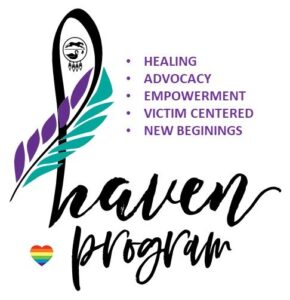Hello all –
“More than 4 in 5 (or 84.3%) American Indian and Alaskan Native women have experienced violence in their lifetime.”
Information made possible by the Mayo Clinic (https://www.mayoclinic.org/healthy-lifestyle/adult-health/in-depth/domestic-violence/art-20048397)
Your partner apologizes and says the hurtful behavior won’t happen again — but you fear it will. At times you wonder whether you’re imagining the abuse, yet the emotional or physical pain you feel is real. If this sounds familiar, you might be experiencing domestic violence.
Recognize Domestic Violence
Domestic violence — also called intimate partner violence — occurs between people in an intimate relationship. Domestic violence can take many forms, including emotional, sexual and physical abuse and threats of abuse. Domestic violence can happen in heterosexual or same-sex relationships.
Abusive relationships always involve an imbalance of power and control. An abuser uses intimidating, hurtful words and behaviors to control his or her partner.
It might not be easy to identify domestic violence at first. While some relationships are clearly abusive from the outset, abuse often starts subtly and gets worse over time. You might be experiencing domestic violence if you’re in a relationship with someone who:
- Calls you names, insults you or puts you down
- Prevents or discourages you from going to work or school or seeing family members or friends
- Tries to control how you spend money, where you go, what medicines you take or what you wear
- Acts jealous or possessive or constantly accuses you of being unfaithful
- Gets angry when drinking alcohol or using drugs
- Tries to control whether you can see a health care provider
- Threatens you with violence or a weapon
- Hits, kicks, shoves, slaps, chokes or otherwise hurts you, your children or your pets
- Forces you to have sex or engage in sexual acts against your will
- Blames you for his or her violent behavior or tells you that you deserve it
- Threatens to tell friends, family, colleagues or community members your sexual orientation or gender identity
If you’re lesbian, bisexual or transgender, you might also be experiencing domestic violence if you’re in a relationship with someone who:
- Tells you that authorities won’t help a lesbian, bisexual or transgender person
- Tells you that leaving the relationship means you’re admitting that lesbian, bisexual or transgender relationships are deviant
- Says women can’t be violent
- Justifies abuse by telling you that you’re not “really” lesbian, bisexual or transgender
Don’t Take the Blame
You may not be ready to seek help because you might believe you’re at least partially to blame for the abuse in the relationship. Reasons may include:
- Your partner blames you for the violence in your relationship. Abusive partners rarely take responsibility for their actions.
- Your partner only exhibits abusive behavior with you. Abusers are often concerned with outward appearances, and may appear charming and stable to those outside of your relationship. This may cause you to believe that his or her actions can only be explained by something you’ve done.
- Therapists and doctors who see you alone or with your partner haven’t detected a problem. If you haven’t told your doctor or other health care providers about the abuse, they may only take note of unhealthy patterns in your thinking or behavior, which can lead to a misdiagnosis. For example, survivors of intimate partner violence may develop symptoms that resemble personality disorders. Exposure to intimate partner violence also increases your risk of mental health conditions such as depression, anxiety and post-traumatic stress disorder (PTSD).
If health care providers focus on your symptoms, this may worsen your fear that you are responsible for the abuse in your relationship.
- You have acted out verbally or physically against your abuser, yelling, pushing, or hitting him or her during conflicts. You may worry that you are abusive, but it’s much more likely that you acted in self-defense or intense emotional distress. Your abuser may use such incidents to manipulate you, describing them as proof that you are the abusive partner.
If you’re having trouble identifying what’s happening, take a step back and look at larger patterns in your relationship. Then, review the signs of domestic violence. In an abusive relationship, the person who routinely uses these behaviors is the abuser. The person on the receiving end is being abused.
If you worry about a friend or family member…or about your own safety… Haven advocates are here to help. You are NOT alone.
If you are able please call or see the messaging links above:
Haven Office: 918-554-2836
Text Line: 918.533.3070
Crime Victim Advocate: 541.602.0616
Program Website: https://havenprogram.com/
Facebook: HAVEN Tribal Program, Twitter: @ProgramHaven, Instagram: HAVENTRIBALProgram.
Our advocates are here to help!
After hours you can reach our local Community Crisis Center at 1.800.400.0883 and Strong Hearts Tribal Hotline at 1.844.762.8483





